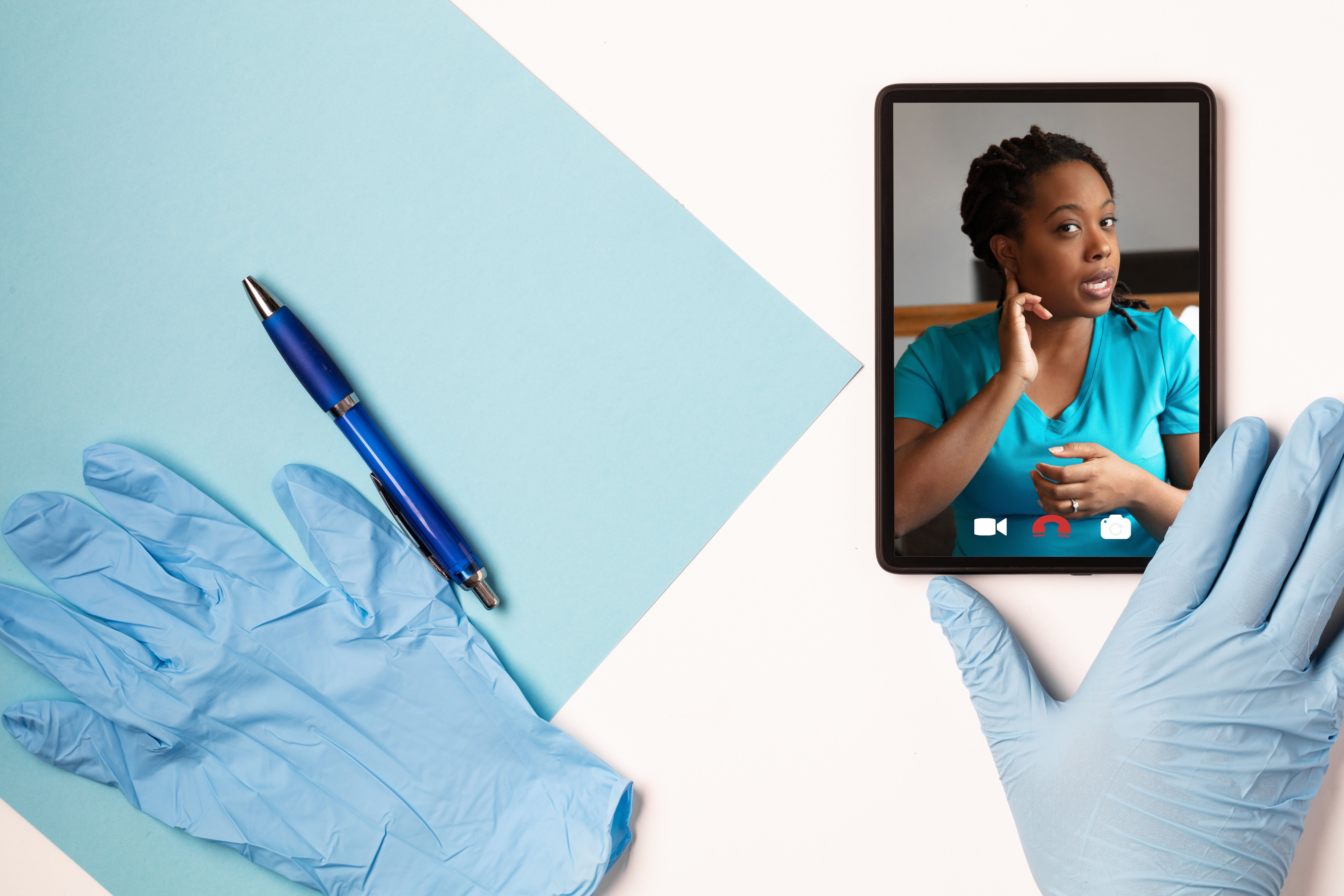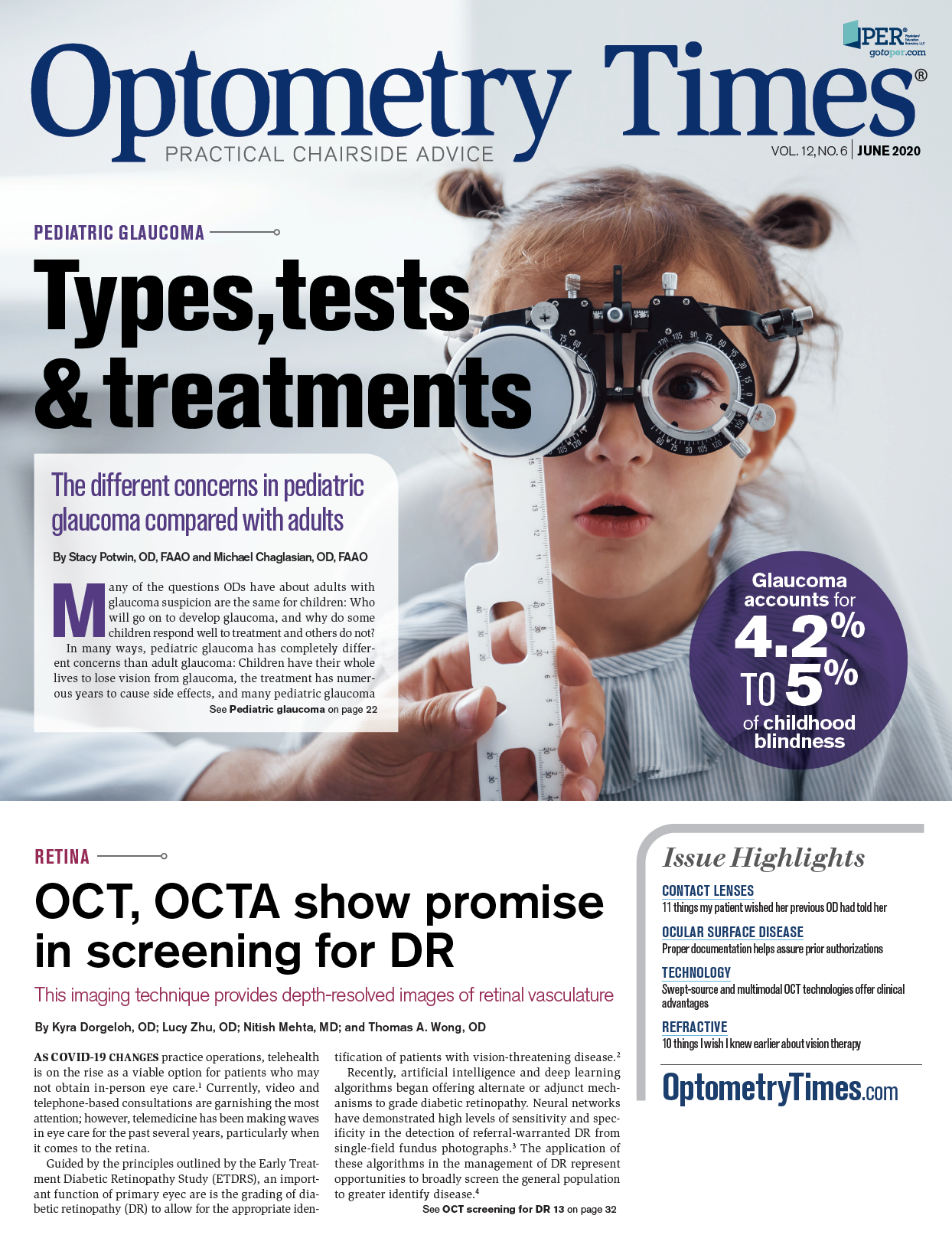Publication
Article
Optometry Times Journal
Telehealth success hinges on better tools
Author(s):
As the need for telemedicine increases, so does the urgency for creating new, less intrusive technology platforms.

While the practice of telemedicine is hardly a new concept, there’s no question that the current COVID-19 health care crisis has jump-started this new approach to patient care.
Due to the virus, it’s clear that telemedicine, once viewed as simply a convenience, is now an essential method of treating patients. At its best, telemedicine is an efficient way for doctors to manage time, make appointments, “meet” with patients and next of kin, and provide treatment such as medications, referrals, and further investigations.
However, there is a risk of overwhelming doctors with demands on their time at all hours of the day. The key is in the development of a communications platform that is available to the doctor at all times and yet limits distractions.
For telemedicine to succeed, a totally new way of communicating is necessary that is direct and respects the patient’s needs as well as the doctor’s time. The communication may be synchronous as in a video call, or asynchronous with messaging and sharing of information balancing patient convenience with minimal distraction for the doctor. It is most efficiently implemented through phone apps since everyone – doctors, patients, next of kin, and hospital personnel – are familiar with these devices and use them all the time.
The following are some of the criteria that must be met if the practice of telemedicine is to succeed during the current crisis and beyond:
· All parties should be connected on one platform. Today, doctors use their own electronic health system to conduct telemedicine or traditional medicine and then fax or electronically send their consultation to other doctors. These voluminous notes have to be signed off even if not urgent and creates more work. At times, the essential point is lost in the long notes written mainly to justify the billing.
· The platform should allow any doctor to send a message about any office or hospital patient to any other doctor on that patient’s care team, no matter what location, organization or electronic health record. The messages should be prioritized and sent in an optimal way to avoid unnecessarily disturbing that doctor. The receiving doctor should get this message in a delayed but reliable manner to reduce distraction but yet be able to request this message sooner if the need arises. A feature such as this can encourage doctors to opt in to connect with their colleagues and provide timely attention to their patient’s needs without getting overwhelmed.
· The platform should allow direct communication among doctors in addition to data sharing to reduce data overload and avoid errors. Though electronic record health systems are in the process of becoming interoperable, just allowing any doctor to access to data from other doctors will cause data overload unless the doctors communicate.
· Patients must be an integral of this platform and be able to add all their health care providers and give consents to encourage communication among their doctors. The patients should share their doctor appointments, treatments, etc. with all of their doctors on a single app rather than sign into different portals to connect with different doctors. They can thus encourage their doctors to talk to each other.
· The platform should be usable anytime from anywhere and yet respect the doctor’s time and privacy. Communication with patients should not be just limited to the time a doctor is in his own office. The doctors should be able to communicate with his patients at all times as necessary and still maintain a record of that communication to add to the electronic health record later
· The platform must allow physicians to secure consent from the patient and create a note for the electronic health record to assure payment from the insurance company, Medicare, or Medicaid.
· Doctors should have access to a platform that allows simultaneous secure video communication with patients inside isolation rooms as well as the next of kin at home during the viral epidemic and beyond. This same platform could be used for hospital rounds to communicate with other doctors and for charge capture.
· The platform should be private, secure, and HIPAA-compliant to allow video telemedicine consultations without concerns about loss of privacy. This isn’t the case today since parties are using WhatsApp or Facetime on their phones or other computers without proper security protections.
This type of practice management and communications app is much more than technology. It gives doctors the ability to “visit” with clients not only during scheduled video appointments, but also at other times when a patient needs help but without creating undue distraction to the doctor. Today, due to the extreme levels of contagion, doctors are likely to make visits short. They are wearing protective equipment that hides the face and limits the ability to “connect” with a patient. Doctors can use a video chat after the face mask visit to discuss care with patients and family at the same time via app.
While this doesn’t replace the actual face-to-face meetings, it does relieve stress, isolation, and possible depression that COVID-19 patients experience.
The current situation has identified the urgent need for universal distraction-free communication technology that literally allows physicians a connection with their patients and their doctors at their fingertips.
Sandeep Jain, MD, is a critical care and pulmonary physician in Broward County, Florida. He is also the developer of ListenMD (www.listenmd.com), a HIPAA-compliant distraction-free messaging app that gives health care professionals the ability to securely connect with patients and their doctors at all times on their phones. The patented app is an intelligent patient-centered universal health care communication platform designed for doctors, doctor’s office staff and patients






